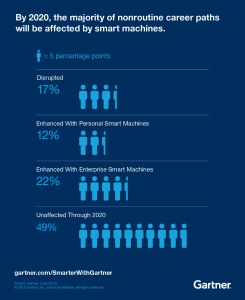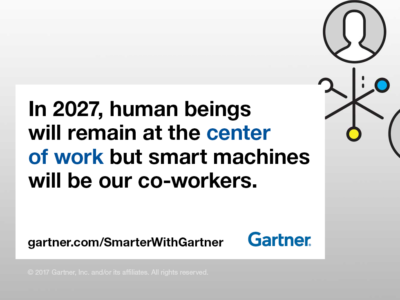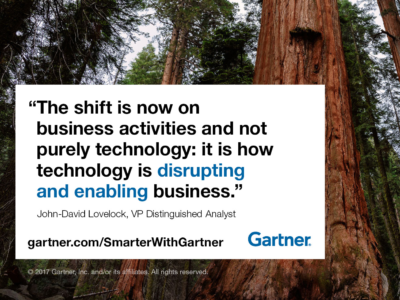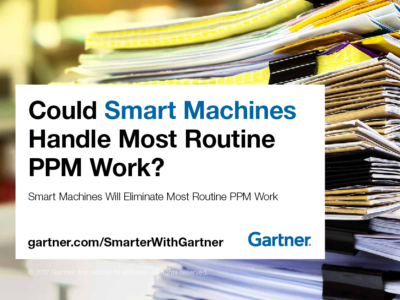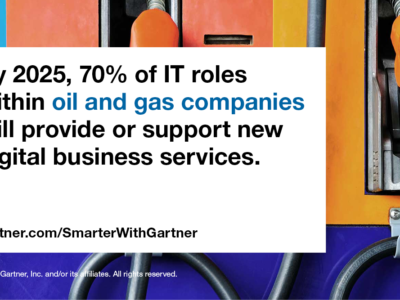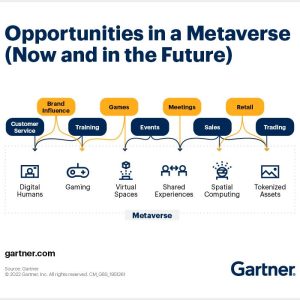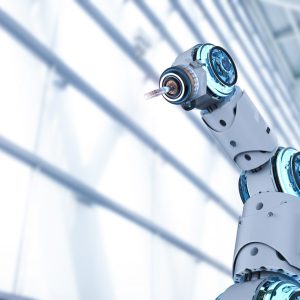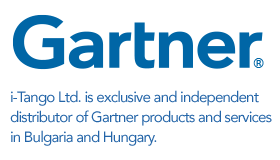The relationships between people and machines will continue to become increasingly collaborative
Contributor: John Lovelock
The bane of every employer is paying employees for non-productive activities. There are many tasks required to perform any job that just don’t add value, and repetitive mundane drudgery that afflicts every job at every level in every company. The problem has been that these tasks are also a requirement, such as re-keying data, scheduling meetings, answering simple client questions, tracking social media, and more.
People who have worked in IT for any length of time are used to, or at least aware, that the tasks they are doing could be made redundant by an advance in technology. Most look forward to it and count on it. This phenomenon of IT taking on commoditized tasks is rapidly spreading outside of IT due to advances on two fronts; virtual workers and smart machines.
The relationships between machines and people are becoming increasingly collaborative as smart machines acquire the capabilities to perform more and more daily tasks and increase their capacity to perform routine activities currently done by people. As this evolution continues, we will see the new wave of task displacement and realigning of skills in the workplace. “Smartness” is now everywhere in the work environment and in a continued pursuit of efficiency, routine tasks consisting of non-value added activities and repetitive tasks are ripe for replacement by some form of automation.
In the information technology outsourcing (ITO) and business process outsourcing (BPO) markets, robotic process automation (RPA) tools are expected to reduce the number of full-time equivalents (FTEs) a provider has attached to deliver the services. The impact will be on work that is labor intensive, such as, keying in images of invoices, bills, customer data, employee data, insurance data, and healthcare data. Gartner estimates that at least a quarter of the BPO and shared services center (SSC) activities done today are re-keying data, and a significant proportion are following rules-based processes, which could well be done by an RPA. As RPAs mature, their use within organizations to reduce similar labor intensive tasks in inevitable. If RPAs are cost effective enough to be used in labor arbitrage advantaged locations, surely they will be used elsewhere.
Virtual assistants have been available for some time. Customer complaints tend to arrive in various unstructured formats, such as emails, mail, texts or social media. Machine learning tools are starting to be used to categorize these complaints. It is possible today to have a machine interrogate, classify and respond to customer complaints, including noting if it is a first or long-standing complaint. Smart machines will range from virtual assist software seen in the contact center today, to virtual workers making routine tasks happen behind the scenes.
The newest generation of smart machines are learning programs that can augment or outperform humans in many decision-making tasks. They are well-scoped to the task that they perform. They can learn how to produce the best results. One of the most exciting developments in smart machines is deep neural networks (DNN). DNNs can examine complex data – video, audio, images – and identify and extract patterns. Today, they are driving improved speech-to-text in your smartphone, tagging Facebook images, playing chess and generally making sense of complex, and noisy data. DNNs will be better and more consistent at cataloging, codifying and finding indications of early stage cancers in X-Rays and CT Scans than radiologists.
There is significant progress being made every day on general automation tools, RPAs, natural language processing, cloud-based services and now DNNs. Smart machines will take on drudgery, they will push the line between what is a decision and what is rule based choice, and they will augment complex decision-making positions. When an RPA, virtual assistant or smart machine allows you to drop the drudgery and focus on what really brings value, won’t that make your job a whole lot better?
More analysis is available in the complimentary Gartner webinar “IT Spending Forecast, 3Q15 Update: Four IT Innovations You Missed.”
Mr. Lovelock is a research vice president and chief forecaster at Gartner. He leads Gartner’s quarterly worldwide IT spending forecast.


